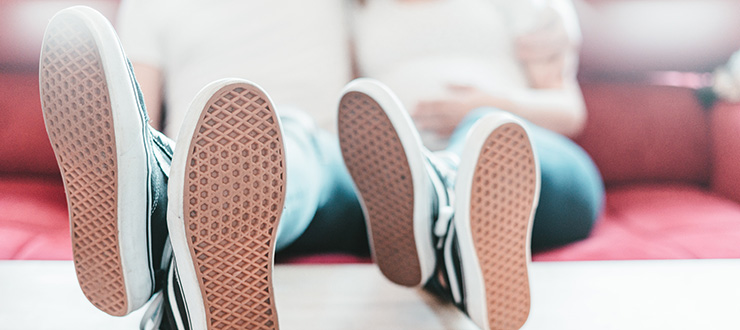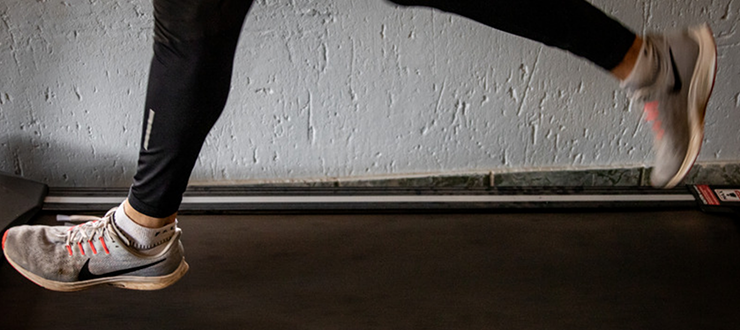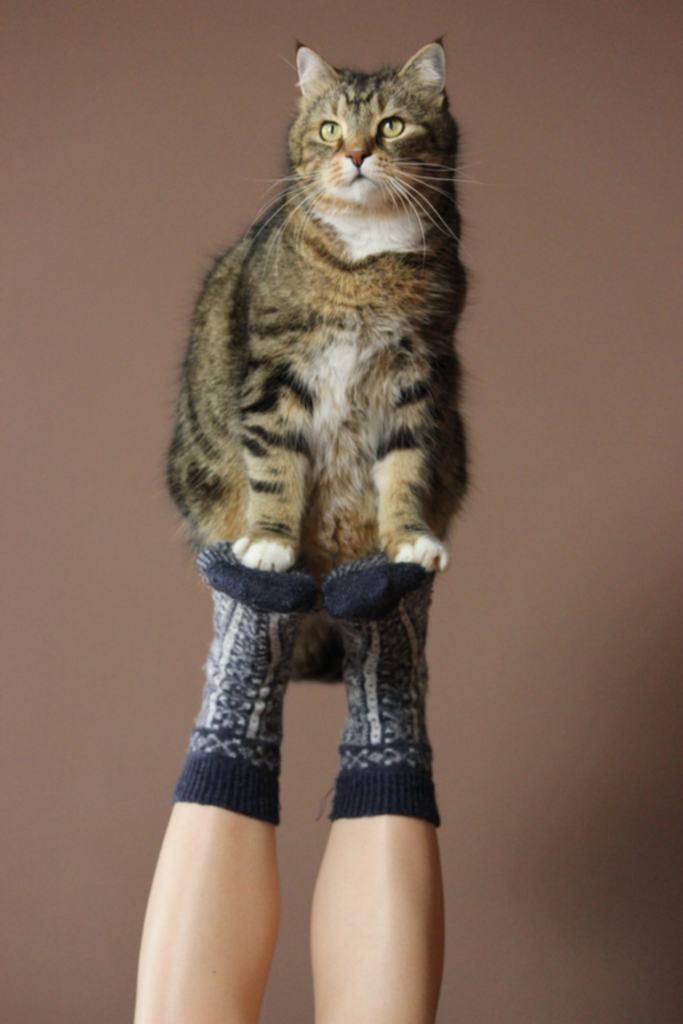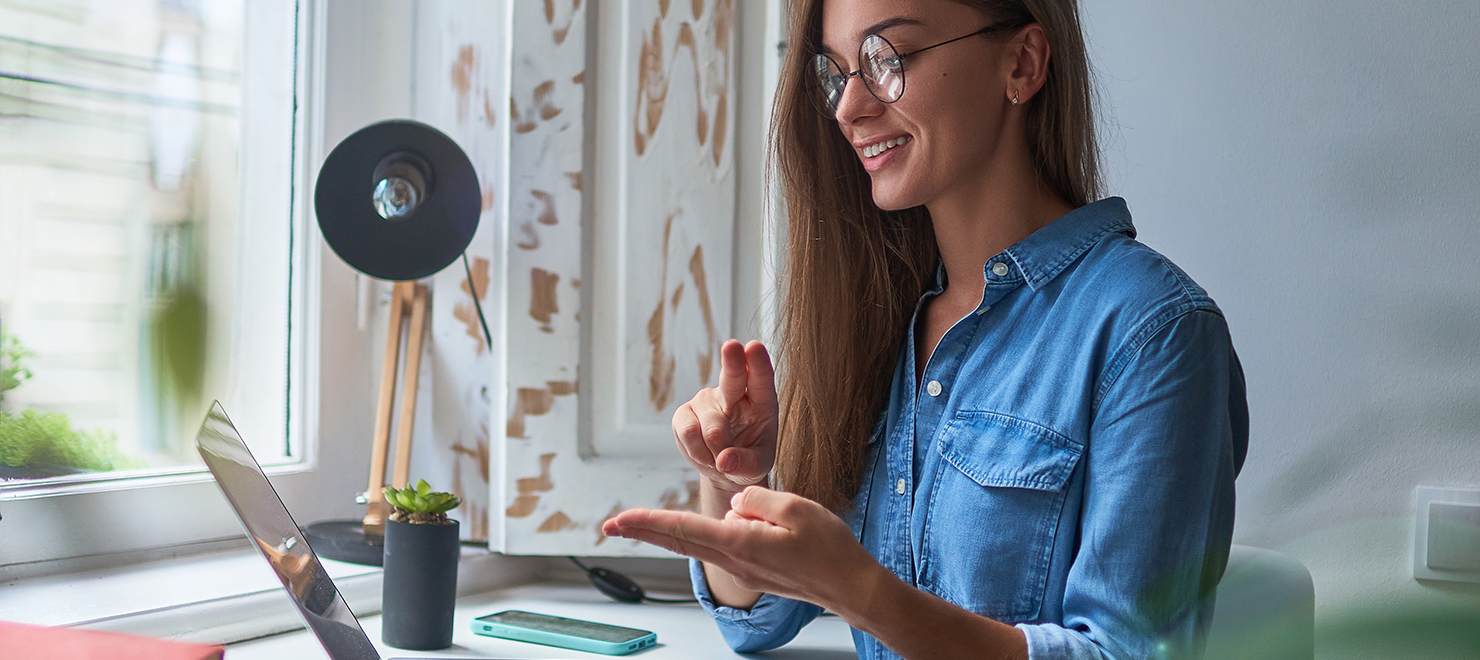
Early in the pandemic, the term “COVID toe” was used to describe painful, swollen and red toes and was thought to be a symptom of COVID-19. Research now suggest that the rise in the number of people with these foot symptoms is not linked to the COVID-19 virus, but is instead the result of spending more time indoors.
Follow these foot health tips from Rebecca MacIntosh, a chiropodist at The Ottawa Hospital, to keep your feet healthy and happy indoors.
Wear your custom foot orthoses indoors
If you have prescribed orthoses (custom insoles for your shoes), it’s important to wear them indoors, especially if you spend most of your time working from home. Like glasses, foot orthoses can only help you if you wear them, so go ahead and wear your foot orthoses indoors.
Protect your feet with an indoor shoe
Your home can be a minefield of sharp corners and heavy objects, so wear comfortable, well-fitting indoor shoes to protect your feet against scrapes and stubbing your toe.
Make sure your shoes fit
The best way to check if your shoes fit is to remove the insole and step on it with socked feet. Check to make sure all the parts of your feet are inside the edges of the insole. If any of your toes spill over, or if you don’t have a finger-width of room between the tip of your longest toe and the front of the insole, your feet won’t have enough room to extend as you walk and it may cause pain down the road.
Wear supportive shoes when you exercise indoors
The convenience of exercising from the comfort of home may mean you forgo putting on your sneakers. But for any high impact exercise, remember to lace up. The shoes you use for exercise should have spongy, shock-absorbing soles, laces, a firm heel and some stiffness in the arch. To check, try to fold your shoe upward heal-to-toe. If you feel resistance, your shoe has support in the arch.

Wear socks

Don’t let their fuzzy exterior fool you. Socks are an important part of your arsenal to protect your feet. Wearing socks inside your shoe provides a comfortable layer between your skin and your shoe to prevent your feet from shearing and rubbing. Socks are also easier to clean than shoes, so they are more hygienic than wearing shoes alone. Cold feet can be uncomfortable, and some medical conditions (arthritis, Raynaud’s disease, Chilblains, peripheral vascular disease, and others) get worse when feet are cold, so consider wearing socks at all times when you are indoors, even to bed.
Inspect your feet
Take a good look at your feet every day to check for bruises, scrapes and other changes in your feet. In other words, get to know your feet like the back of your hands. In particular, people tend to wait too long before they get medical help for nail fungus on their feet. If you start to notice a bit of discolouration on your toe nail, talk to your doctor about your treatment options.
Dry your feet well
It can be tempting to skip drying your feet when you get out of the shower or bath, but it’s important to spend a little extra time drying all parts of your feet, especially between your toes. The spacing between toes can be tight, which can prevent airflow. Be sure to separate each toe and dry between them thoroughly. Dampness between your toes can be a breeding ground for fungus.
Apply foot cream – but not between your toes

Your feet deserve as much attention as the rest of your body, so once your feet are dry, be sure to show them some love by applying foot cream. The skin on your feet is thicker than the skin on the rest of your body, and foot cream is specially designed to work on thicker skin and help prevent cracking. Avoid putting foot cream between your toes. That skin needs to stay dry and cream-free.
Keep your nail clippers to yourself
Keeping your toenails healthy is part of personal hygiene, and the tools you use to do it should be personal, too. Avoid using communal nail clippers and get yourself your own set. This will help avoid spreading fungus, dirt, and skin cells between household members. If you have a toe nail that you think might have fungus, use a separate set of clippers for that nail to lower the chances of spreading the fungus to other toenails.
Get to know your chiropodist and pedorthist
A chiropodist is a foot specialist who is dedicated to preventing and treating diseases, disorders and disfunctions of the foot. They are the only practitioners in Ontario who are exclusively trained and regulated by the province to provide foot health care and orthotics. It takes seven to eight years of schooling before being licensed in Ontario.
A pedorthist is a trained expert in analyzing posture and movement patterns. More specifically, a pedorthist focuses on how the muscles and joints of the lower body function and how those muscles and joints of the foot interact with the rest of the body. The pedothist at The Ottawa Hospital can help you with proper footwear, compression socks and custom foot orthoses if you already have a prescription.
When to connect with a chiropodist
If you see anything different about your feet, it’s worth making the call.
About the Chiropody and Pedorthics Clinic at The Ottawa Hospital
The Chiropody and Pedorthics Clinic at The Ottawa Hospital is the only one of its kind in the region. Our chiropodists are highly engaged in complex clinical care, education and research, and work with many other specialists throughout the hospital, including orthopedic surgeons, vascular surgeons, infectious disease specialists, dermatologists, endocrinologists, and nursing and home-care services. If you have a foot ulcer, you can ask your family doctor to refer you to our chiropodists. Our pedorthist is available to all members of the public without a referral.
If you are not a patient with a high-risk foot, but you are seeking other chiropody services (e.g. nail care, wart treatment, callus and corn care, ingrown nail, etc.) please contact a community chiropody clinic through the College of Chiropodists of Ontario, or call 416-542-1333.

Support patient care and research at
The Ottawa Hospital
You might also like…
Understanding rabies: Risks, vaccination and what to do after a bite
Although rare in Canada, rabies is almost always fatal once symptoms appear. Infectious diseases expert Dr. Michaeline McGuinty shares how rabies is spread, when to get vaccinated and what to do after a bite.
“My story doesn’t have to be your story”: New screening test better at preventing cervical cancer
“I went from being a 32-year-old new mom to a cancer patient with an incurable diagnosis.” Alicia’s journey underscores the critical role of HPV testing in preventing cervical cancer. Discover how the new HPV test can save lives and find out how to book your cervical screening appointment with our “Superscreener.”
Sign language interpretation services at The Ottawa Hospital: 5 FAQs
Do you require a sign language interpreter when you come to The Ottawa Hospital? For patients who are Deaf or hard of hearing, we provide both American Sign Language (ASL) and Langue des Signes Québécoise (LSQ) interpretation services at no cost. Before your next appointment with us, find out everything you need to know.
Watch: What you need to know about coronary artery disease
Coronary artery disease is the most common form of heart disease and one of the leading causes of death worldwide. In this video, Cardiologist Dr. Nadine Gauthier shares risk factors, symptoms, treatment options and how to adopt a heart-healthy lifestyle.
A new guide to navigating your mental health
The Ottawa Hospital has partnered with YouTube to create an important series of videos where health-care professionals offer expert guidance to help you or a loved one navigate mental health challenges.
Watch: Understanding dementia
With a growing seniors population, the number of people living with dementia continues to rise. Learn more about dementia’s causes, symptoms and treatments in this video with Dr. Lara Khoury, Geriatrician, and Jennifer Koop, Advanced Practice Nurse in dementia care.


 To reset, hold the Ctrl key, then press 0.
To reset, hold the Ctrl key, then press 0.





